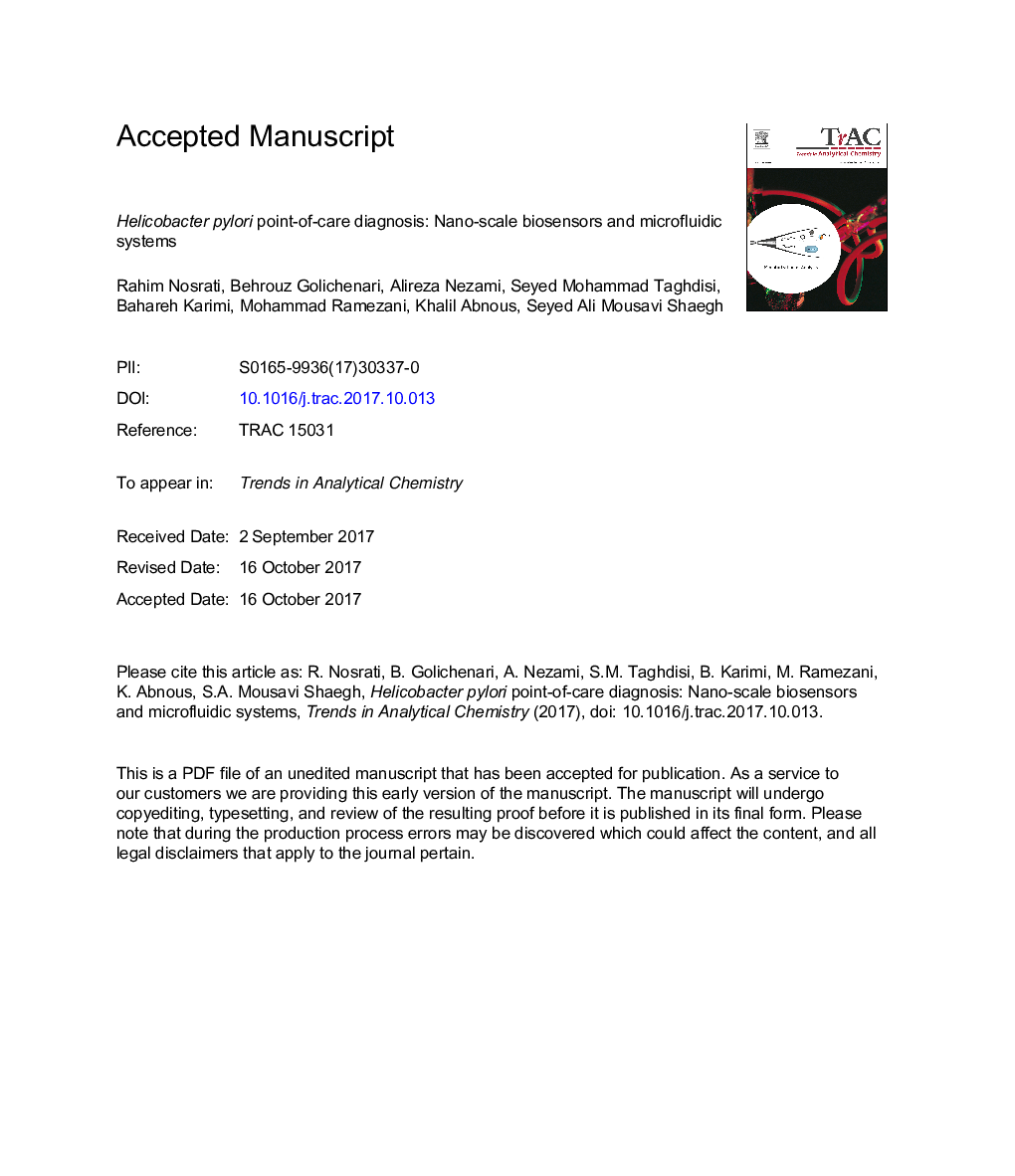| Article ID | Journal | Published Year | Pages | File Type |
|---|---|---|---|---|
| 7688143 | TrAC Trends in Analytical Chemistry | 2017 | 36 Pages |
Abstract
Helicobacter pylori is a species of bacteria that can colonize the human stomach mucosa. It is closely associated with gastric diseases. The restrictions of traditional methods have encouraged the development of innovative methods for rapid, reliable, and cost-effective diagnosis of H. pylori infection. In recent years, the concept of biosensor and microfluidic-based devices has opened new horizons in high-precision detection. Once combined with nanomaterials, nano-scale biosensors and microfluidic systems provide powerful analytical platforms for point of care (POC) diagnosing of H. pylori. In this article, a brief overview of general aspects of H. pylori infection and current diagnostic methods are firstly discussed. In addition, a clear and concise review of recent advances of biosensors, paper-based and microfluidic systems based on nanomaterials for the detection of H. pylori are discussed herein. Subsequently, the latest development of integrated and miniaturized microfluidic biosensing technologies for POC detection of H. pylori is explained.
Related Topics
Physical Sciences and Engineering
Chemistry
Analytical Chemistry
Authors
Rahim Nosrati, Behrouz Golichenari, Alireza Nezami, Seyed Mohammad Taghdisi, Bahareh Karimi, Mohammad Ramezani, Khalil Abnous, Seyed Ali Mousavi Shaegh,
